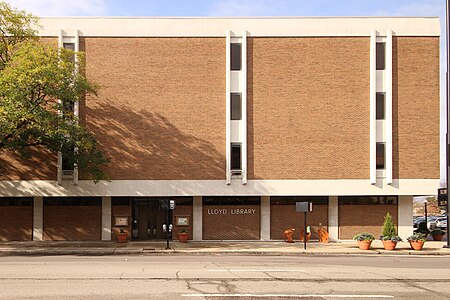Lloyd Library and Museum
Biographical museums in OhioEclectic medicineLibraries in OhioMedical and health organizations based in OhioMedical museums in the United States ... and 3 more
Museums in CincinnatiPharmacy museumsPharmacy organizations in the United States

Lloyd Library and Museum is an independent research library located in downtown Cincinnati, Ohio. Its core subject and collection focus is medicinal plants, with emphasis on botany, pharmacy, natural history, alternative medicine, and the history of medicine and science.
Excerpt from the Wikipedia article Lloyd Library and Museum (License: CC BY-SA 3.0, Authors, Images).Lloyd Library and Museum
Plum Street, Cincinnati West End
Geographical coordinates (GPS) Address Phone number Website External links Nearby Places Show on map
Geographical coordinates (GPS)
| Latitude | Longitude |
|---|---|
| N 39.105253 ° | E -84.519242 ° |
Address
Lloyd Library and Museum
Plum Street 917
45202 Cincinnati, West End
Ohio, United States
Open on Google Maps










